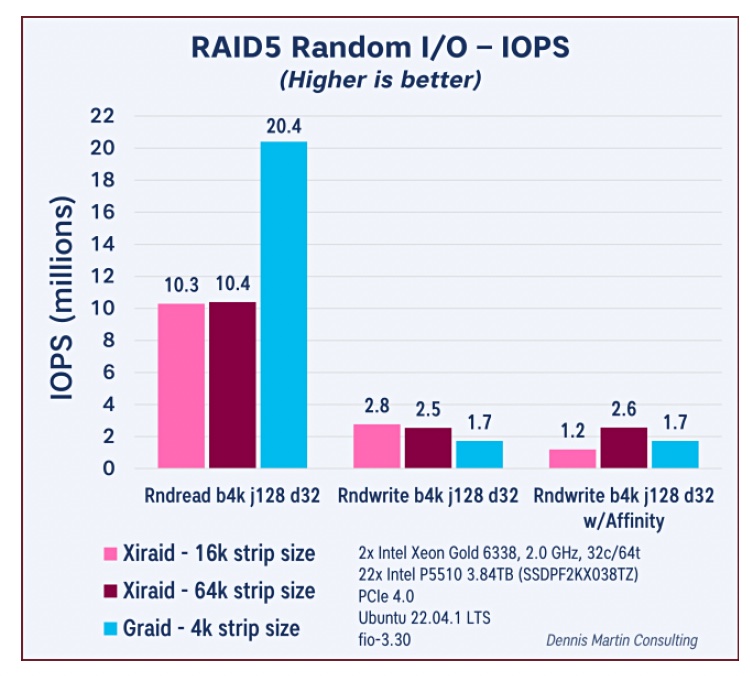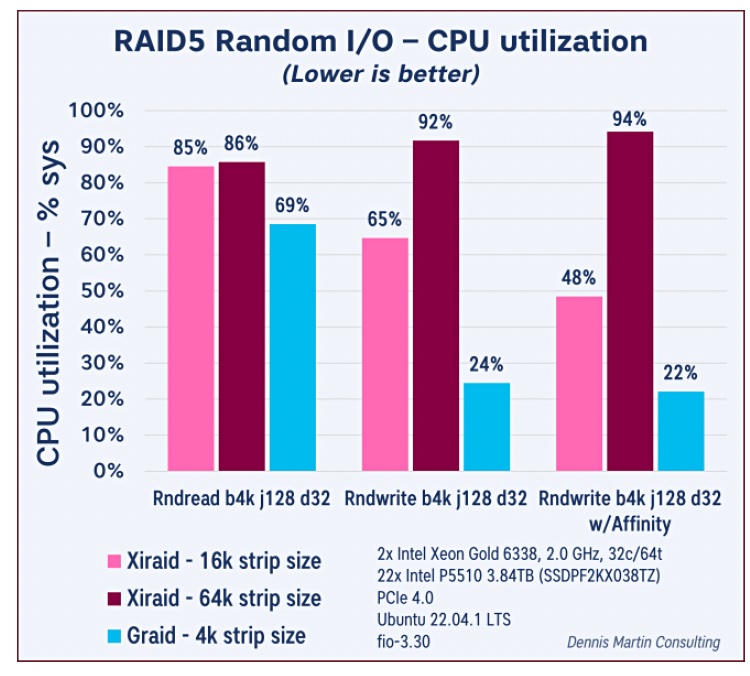Graid reckons its GPU-powered RAID card has delivered better performance than Xinnor software RAID running in the same server, a claim that is being contested.
RAID requires a set of parity calculations on data to be written to or read from storage drives. The parity bits are added to stripes of the data as they are written across drives and enable the data to be reconstructed if a storage drive is lost. There are various RAID schemes delivering different levels of protection, with RAID 5 providing protection against drive failure in configurations with three or more drives.
Software RAID, such as Xinnor’s xiRAID, uses the host CPU to carry out the striping and parity calculations. Hardware RAID cards have dedicated processing to do it instead, offloading the host CPU. Graid says its SupremeRAID cards use multiple GPU cores to parallelize the parity calculations and perform them faster than ASIC or FPGA-powered cards.
It has run a fio synthetic benchmark, audited by Dennis Martin Consulting, on a Supermicro SYS-220U-TNR server featuring dual Xeon Gold 2 GHz, 32-core CPUs, and 22 x Intel P5510 384TB SSDs hooked up with NVMe and a PCIe gen 4 interconnect. The benchmark tested RAID 5 random and sequential read and write IO, measuring IOPS, CPU utilization, and a CPU effectiveness measure. This calculates the amount of IO performed in relation to the amount of CPU performance used and expressed as IO per 1 percent CPU.
The benchmark runs compared Xinnor’s xiRAID v4.0.1 and Graid’s SupremeRAID v1.5, which was generally faster and used less CPU in all the test scenarios.


Xinnor said in November last year that its software RAID is so efficient that it can outperform RAID cards, including SupremeRAID.
At the time, Sergey Platonov, Xinnor VP for Product Strategy, told us: “While Graid is indeed very fast, it comes with a slot tax, taking up PCIe lanes that are usually at a premium in NVMe-heavy setups.”
We asked Xinnor to comment on this latest Graid benchmark, and a spokesperson said: “First of all, we respect Graid as any other competitor. Their approach is different than ours, as we achieve high performance without requiring extra hardware, while Graid relies on a GPU. We believe there can be applicability for both approaches, depending on the application and system limitations.
“This said, on the report, we identified several inaccuracies, demonstrating poor knowledge of our technology. Concerning the performance and CPU load results, we have different numbers from independent tests run by several customers and from our own internal testing. This is not a big surprise, as setting up proper benchmark is not simple.
“That’s why we released on our blog page a guide to explain step-by-step how to run dependable and repeatable benchmarks. We welcome customers to use this guide to run their own test and validate which solution fits them best.”
- https://xinnor.io/blog/performance-guide-pt-1-performance-characteristics-and-how-it-can-be-measured/
- https://xinnor.io/blog/performance-guide-pt-2-hardware-and-software-configuration/
- https://xinnor.io/blog/performance-guide-pt-3-setting-up-and-testing-raid/”
Download the Graid benchmark report here.








